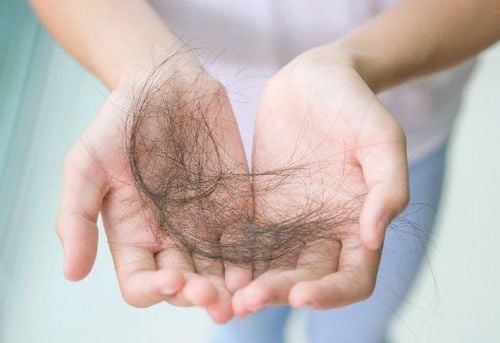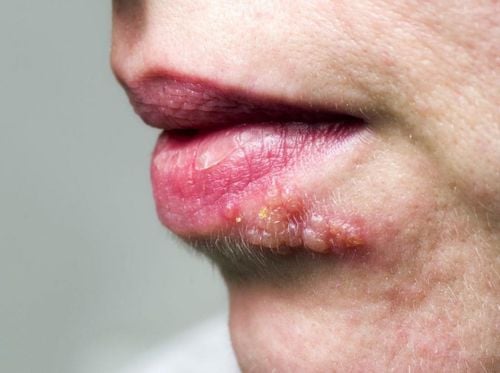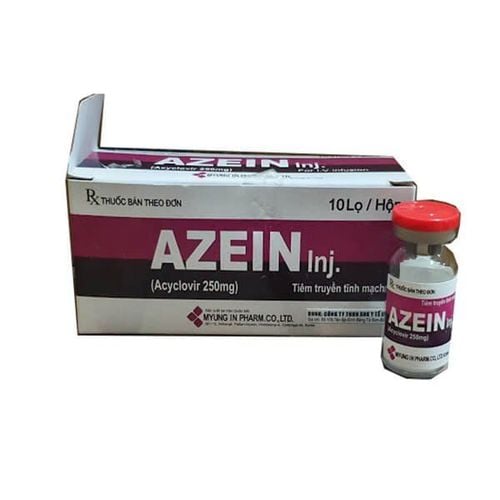This is an automatically translated article.
Shingles in the eye can cause many dangerous complications such as scarring, vision loss and other health problems. Shingles and its complications can be completely prevented by getting vaccinated if you are over the age of 50.
1. Shingles and shingles in the eye
Shingles is a disease caused by the varicella-zoster virus, which forms a rash, blisters on the body and face of the patient. This is also the virus that causes chickenpox, even if you have recovered from chickenpox, the virus remains in the body in a dormant form, when it is reactivated it will cause shingles.The first shingles symptom most people feel is a sharp or burning pain, usually on one side of the body. Common feeling in the trunk area, including: waist, chest, ribcage... accompanied by signs: headache, low-grade fever, fatigue, flu-like symptoms
Within two to three days, The patient will feel pain in the area of red skin and rash. The shingles virus travels along nerves, so the rash will usually form a line on one side of the body or face. For a few days, these blisters will be painful, then they will burst and may bleed. The shingles rash can last two to six weeks, and the blisters will gradually scab over and heal.
The varicella-zoster virus is one of the causes of chickenpox and shingles. When this virus affects the eye, it is called herpes zoster ophthalmicus. There are 2 viruses that cause shingles in the eyes:
Herpes simplex type 1 or HSV1, which causes cold sores on the lips and mouth and can lead to eye problems. It causes an infected cornea. Herpes simplex type 2 (HSV2) can also cause keratitis, mainly in neonates, but is very rare.
Like many viruses, these two have been in the body for a while, living along the nerves. Until the virus is activated and flared up, it will multiply and move from one area of your body to another. For a weakened immune system, the virus will attack more aggressively.
Approximately 10% to 20% of patients have shingles around the eyes. Shingles in the eye can cause scarring, vision loss, and other health problems. Patients can prevent shingles and its complications by getting vaccinated if they are over the age of 50.
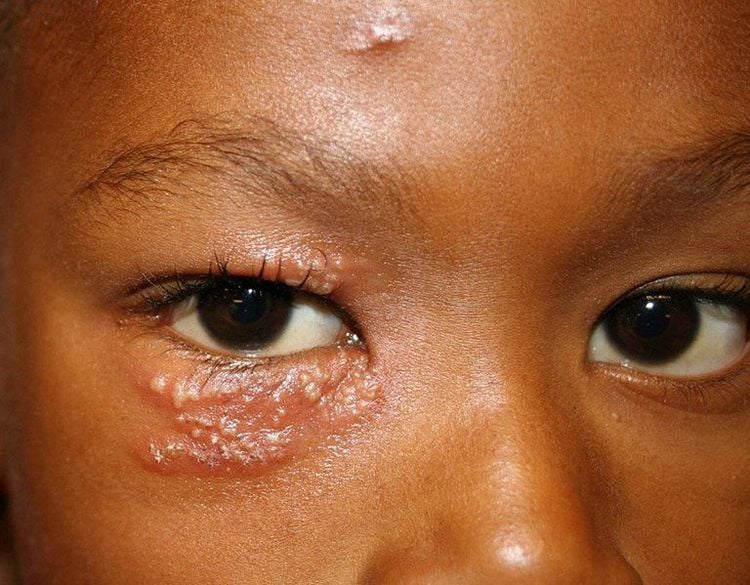
Bệnh zona ở mắt là do virus varicella-zoster gây ra
2. Symptoms of shingles in the eye
When you have shingles in your eyes, a blistering rash will form on your eyelids, forehead, at the tip or on one side of your nose. This rash may appear at the same time as the skin rash, or several weeks after the blisters on the skin disappear. Along with the rash, the person may experience other symptoms such as:
Burning or stinging pain in the eye Redness around and in the eye Tears and eye irritation Blurred vision and sensitivity to light A Some parts of the eye will be swollen such as: eyelids, retina because it is the light-sensitive layer at the back of the eye or the cornea is the clear layer at the front of the eye. If you have one or more of these symptoms, see your doctor or ophthalmologist for diagnosis and treatment. The sooner a person is treated, the less likely they are to have long-term complications.
3. Complications of shingles in the eye
The shingles rash will fade after a few weeks, but the pain will continue for weeks, months. This complication is caused by nerve damage called postherpetic neuralgia (postherpetic pain). This condition is more common in older people. In most people, neuropathic pain gets milder over time.
For eye shingles, severe swelling of the cornea will leave permanent scarring. Shingles can also cause swelling of the retina and increase eye pressure, leading to glaucoma. Glaucoma is a disease that damages the optic nerve and injures the cornea. Treating shingles eye early can help you avoid long-term problems, especially permanent vision loss.
4. Diagnosis and treatment of shingles in the eye
Diagnosis:
A doctor can diagnose shingles just by looking at the rash on the eyelids, scalp, and body. At the same time, your doctor will take a sample of fluid from the blister and take it to a lab to test for the varicella-zoster virus.
Accordingly, patients with shingles in the eye are assigned to check: cornea, lens, retina and other parts of the eye. From there, to find out the causes of the disease as well as the condition of the disease.
Treatment of shingles in the eye
One of the ways to treat shingles in the eye is to use antiviral drugs such as acyclovir (Zovirax), famciclovir (Famvir), valacyclovir (Valtrex). The effects of these medications are to: stop the virus from spreading, help blisters and rashes heal faster, and relieve pain. Using the medication within three days of the rash appears can help you avoid long-term shingles complications.
To reduce swelling in the eye, the doctor may also give the patient steroid medicine in the form of pills or eye drops. If you have postherpetic neuropathy, pain relievers and antidepressants can help with neuropathic pain.
The shingles rash will heal within one to three weeks, symptoms around the face and eyes can sometimes take up to several months to heal. In the early stages of the disease, your doctor will check you every few days. After being treated for an infection, patients need to see an ophthalmologist every 3 to 12 months to check for glaucoma, scarring, and other long-term problems that can affect vision.
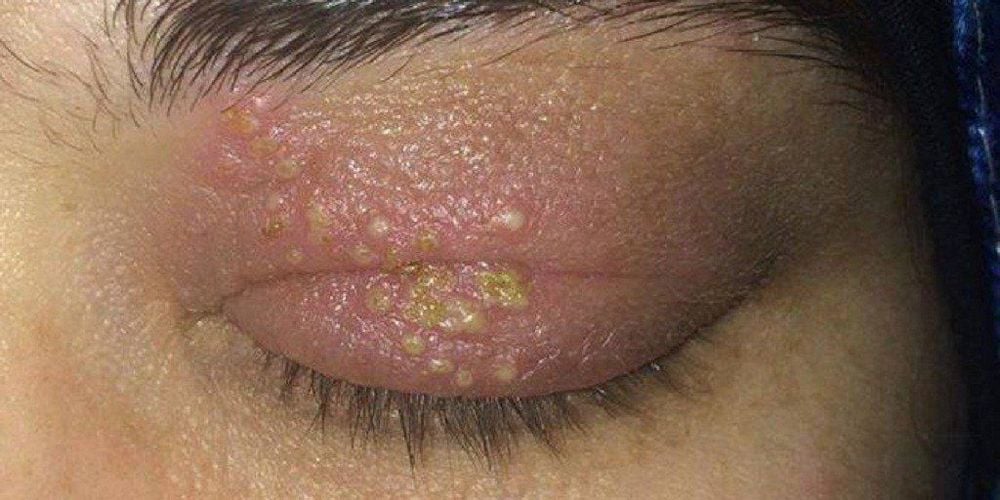
Hình ảnh bệnh zona ở mắt
5. Prevent shingles in the eyes
When you have shingles, try to avoid close contact with anyone, this is especially important during the infectious phase, when the person has blisters on the skin. If a person has never had chickenpox, they can get the chickenpox virus even though they will get chickenpox and not get shingles. Avoid contact with pregnant women and people with weakened immune systems. Shingles is especially dangerous for this group of people. Patients should keep and avoid scratching at the site of the rash. Wash your hands after touching the rash. Although shingles are not dangerous diseases, their complications cause a lot of trouble for patients, especially causing shingles or corneal ulcers, causing blindness. When you have shingles, you should not be too worried, you need to be determined and persistent in treatment to get rid of the disease quickly. The best prevention is to get the chickenpox vaccine so that your child does not get the disease and in the future avoids getting shingles.
Please dial HOTLINE for more information or register for an appointment HERE. Download MyVinmec app to make appointments faster and to manage your bookings easily.
Reference source: Webmd.com; Healthline.com





